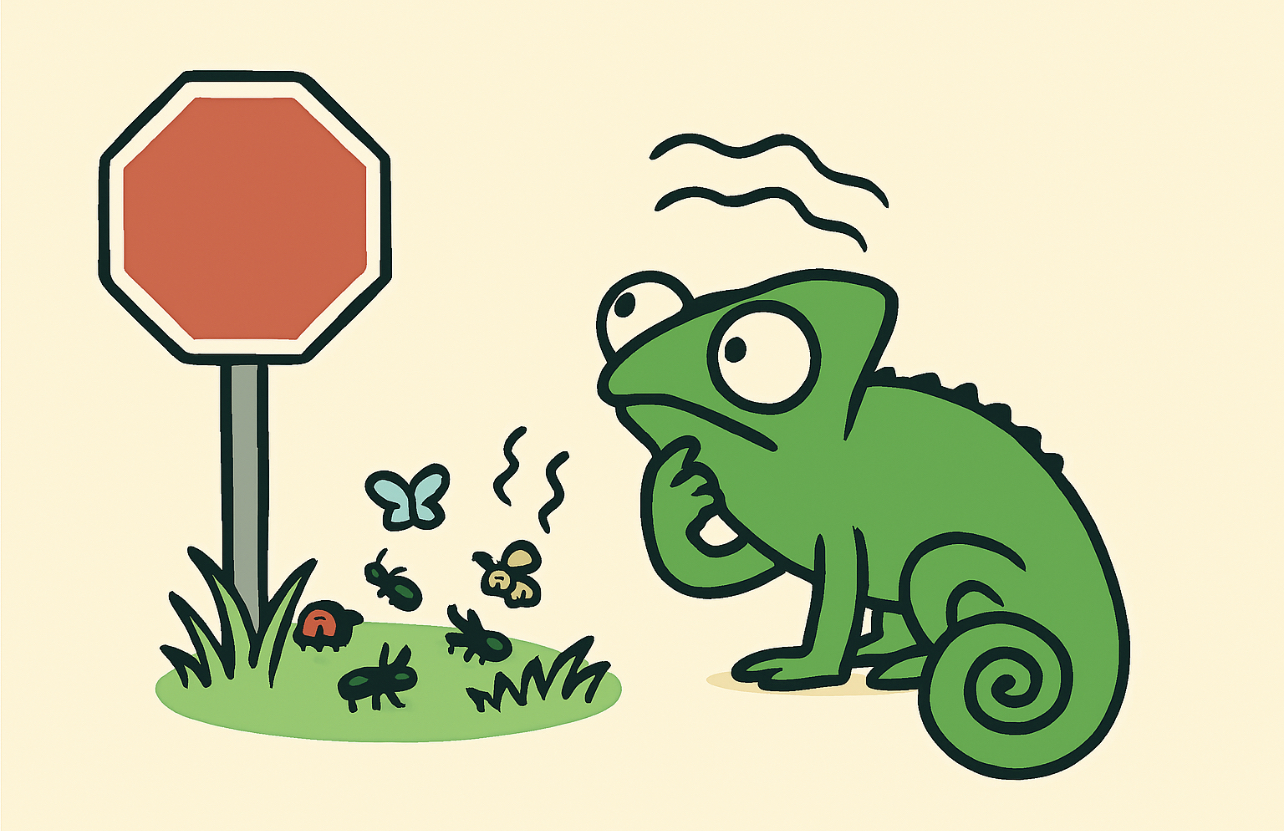Myth 75: “Never feed indigenous insects to chameleons in captivity”

The debate
Keepers often ask whether local, wild-caught insects can be offered to captive chameleons. Nutritional diversity and natural foraging are appealing, but risks—contamination, parasites, ecosystem impact, and toxicity—demand rigorous sourcing and precaution.
---
Supporting arguments
• Nutritional diversity: wild insects can add proteins, fats, and micronutrients beyond standard feeder species.
• Unique compounds: carotenoids, fatty acids, and vitamins may be present in forms difficult to replicate with commercial feeders.
• Behavioral enrichment: diverse prey supports natural hunting and may improve engagement and appetite.
• Local abundance: many regions have readily available indigenous insects, reducing cost and logistics.
---
Concerns and constraints
• Uncontrolled contaminants: wild insects may carry pesticides, herbicides, fertilizers, heavy metals, or household/urban pollutants (e.g., cleaning agents, motor oil, exhaust particulates).
• Pathogens and parasites: nematodes, protozoans, fungi, and bacteria can transfer; even if prevalence is low, consequences can be serious.
• Ecological impact: indiscriminate collecting can harm local food webs, pollination, and species with slow reproduction or declining populations.
• Legal protections: some indigenous insects are protected; collecting or feeding them may be illegal.
• Toxicity and venom: certain insects are actively or passively poisonous (toxin producers, sequesterers) or dangerously venomous; some become toxic by ingesting poisonous plants or contaminated substrates.
---
Ethical, legal, and safe sourcing principles
• Ethical sourcing: collect sparingly without harming local populations or habitats; avoid pollinators and keystone species; prioritize minimal ecological footprint.
• Legal compliance: respect local laws; do not collect, keep, or feed any legally protected species; secure permits where required.
• Safe sourcing: feed only insects with credible evidence of no exposure to agricultural chemicals, industrial emissions, or urban/household contaminants; avoid roadside, agricultural margins, gardens treated with products, and areas near workshops or waste.
• Non-toxic selection: exclude insects known or suspected to be poisonous or dangerously venomous, and any species that sequester plant toxins; when identification is uncertain, do not feed.
• Better safe than sorry: if you cannot verify identity, safety, legality, and contamination status, do not use the insect.
---
Practical recommendations
• Prefer captive-bred feeders: crickets, roaches, silkworms, black soldier fly larvae, hornworms, and locusts can be gutloaded and supplemented to match nutritional needs.
• If using indigenous insects: follow the sourcing principles above; collect from clean habitats; use taxonomically identified, non-protected, non-toxic species only; quarantine and observe before feeding.
• Documentation and traceability: record collection sites, dates, and conditions; note any nearby chemical use or pollution; maintain identification notes/photos for accountability.
• Diet balance: treat wild insects as occasional diversity, not a staple; rely on well-gutloaded captive feeders for core nutrition.